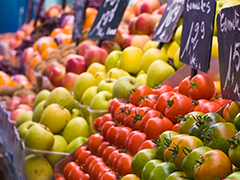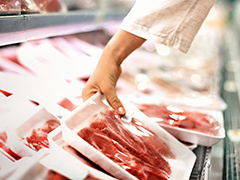How to Save Money at the Grocery Store

Food prices are on the rise, and healthier food usually comes with a higher price tag. But you should never sacrifice nutrition to save money. Follow these steps to get the most out of your dollar at the grocery store.
Stick to your grocery list
As humans, we all fall victim to the impulse purchase at times. Creating a list of groceries in advance and sticking to it can help prevent these sometimes-costly mistakes. Check the ads for sales or coupons as you create your list to maximize your savings.
Monitor serving sizes
Compare and purchase healthy foods that contain higher amounts of servings per dollar. But be careful not to confuse foods that are high in calories with foods that are high in nutrients. Combine this with better portion control when eating and you’ll really start to see how much the savings can add up.
Buy in season
Food in season is cheaper. Certain foods, like corn on the cob, can cost ten times as much out-of-season as they do in-season. Shop your local farmers' market for great prices on local produce that won't include shipping costs.
Find alternatives
Fresh foods can sometimes be expensive. Compare prices against frozen, canned or dried foods to save money without sparing the nutritional value. Produce is usually frozen, canned or dried at the peak of ripeness when nutrients are at their most plentiful. Plus, when you use these foods, you can take what you need and save the rest for later—this way, far less food goes to waste.
Eat vegetarian for a day
Skip the expensive meat once a week and eat vegetarian to increase your consumption of healthy plant foods while saving money. Beans, eggs, tofu and legumes are also excellent sources of protein that cost a fraction of the price.
Go generic
Consider store-brand foods over name-brand ones. They follow the same standards of quality that name-brands follow with a lower price tag.


